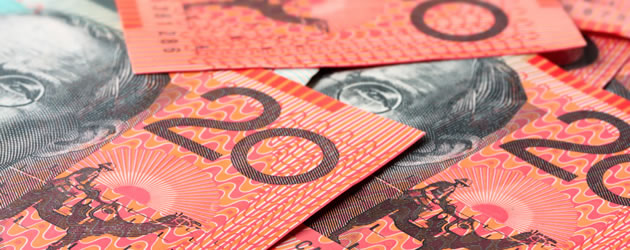Risk-Off Attitude Hinders ‘Aussie’ Climb, EUR/AUD Fluctuates
After dropping around -70 pips this morning, EUR/AUD has fluctuated around 1.5033 for most of the day.
Despite data bolstering the Australian Dollar, risk-off sentiment seems to be holding back the currency’s progress and favouring the Euro despite weak Eurozone data.
However, with European Central Bank (ECB) statements due to be made throughout Thursday, the Euro’s strength may not last.
Earlier…
The Euro to Australian Dollar (EUR/AUD) exchange rate had been bullish this week right up until yesterday’s session where the pair’s movement seemed to suddenly reverse – a shift likely attributable to improved trade circumstances for Australia.
Underwhelming Eurozone Data Unable to Continue Driving EUR/AUD Momentum
Last week’s Eurozone CPI instilled confidence in investors that the Eurozone’s inflation could be edging higher as hoped. As a result, the Euro began to make a stronger push back against the recently bullish Australian Dollar and the pair peaked at a new monthly high this week.
Unfortunately, after reaching that lofty 1.5148 during Tuesday’s session the pair began to drop. EUR/AUD is currently down almost -0.4% on this morning’s levels of 1.5085 and trends in the region of 1.5030.
Despite analysts and investors hoping that the Eurozone will enjoy a steady and reliable recovery after extreme easing measures were put into place by the ECB last month, data released this week has been unable to meet forecasts.
Eurozone PMI data released yesterday put scores for Italy, France, Germany and the Eurozone generally almost all lower than forecasts. This includes March’s final composite PMI results, which indicates slowing growth for many of the Eurozone’s key members.
Retail sales data was unable to spark the Euro to continue its uptrend either despite a higher-than-expected score of 2.4% in the year-on-year print. A set of releases this morning indicated that Eurozone retail PMI also struggled with scores outside of Germany coming in below 50.
Growing Chinese PMI and Analyst Confidence Towards RBA Encourages ‘Aussie’ Strength
Despite a tough time for the commodity bloc this week, with the ‘Panama Papers’ scandal triggering largely risk-off sentiment, other factors in the global economy have assisted the Australian Dollar in regaining a little strength.
Chinese Composite PMI, which covers both manufacturing and services, printed above the neutral 50.0 mark in this morning’s March release despite recent concerns for the Chinese economy and February’s figure of 49.4.
The 51.3 score also marks the highest in almost a year – an 11 month best according to the Caixin Purchasing Managers’ Index. As one of Australia’s biggest trade partners, the impressive increase in Chinese activity was good news for Australia’s economy too, as well as the Australian Dollar.
To add to Australia’s trade-related joy, iron ore shipments are reported as being strong this week. Exports of the commodity from Port Hedland are thought to have reached a new record, shipping 39.53 million tonnes of iron ore, with 32.6 million of those tonnes going to China.
Mortgage Choice Chief Executive John Flavell also released comments analysing the Reserve Bank of Australia’s recent interest rates decision. He claimed that the decision to hold interest rates at 2.00% is actually an indication of Australia’s economic strength and estimates that the RBA will not need to hike, or cut, rates any time soon.
It’s possible that some concerned investors, initially selling the AUD after the RBA’s announcement, have been eased by this analysis.
Euro to Australian Dollar Exchange Rate Forecast: European Central Bank (ECB) Statements May Influence EUR/AUD
Upcoming data releases for the Australian ecozone are limited for the remainder of the week and investors are expected to continue readjusting and settling after the RBA’s statements on Tuesday.
Data on the nation’s Performance of Construction Index is due for release tomorrow morning however, and further contractions from its February score of 46.1 could hold the ‘Aussie’ back.
Developments in the iron ore industry are also likely to continue to cause movement in the ‘Aussie’. The commodity responsible for much of AUD’s recent gains is expected to decrease in price by July.
The European Central Bank is set to make moves tomorrow as President Mario Draghi attends a meeting with Portugal’s President. An account of the last monetary policy meeting will also be released tomorrow afternoon, perhaps reminding investors of the ECB’s dovish intentions for the Euro.
Lastly, Federal Reserve Chairwoman Janet Yellen is due to speak in New York tomorrow night. Any risk-on movement influenced by her potentially dovish attitude could well inspire more strength in the Australian Dollar after the ‘Panama Papers’ leak hurt risk-sentiment earlier this week.
The Euro to Australian Dollar (EUR/AUD) exchange rate currently trends around 1.5030 while the Australian Dollar to Euro (AUD/EUR) exchange rate trends in the region of 0.6651.



